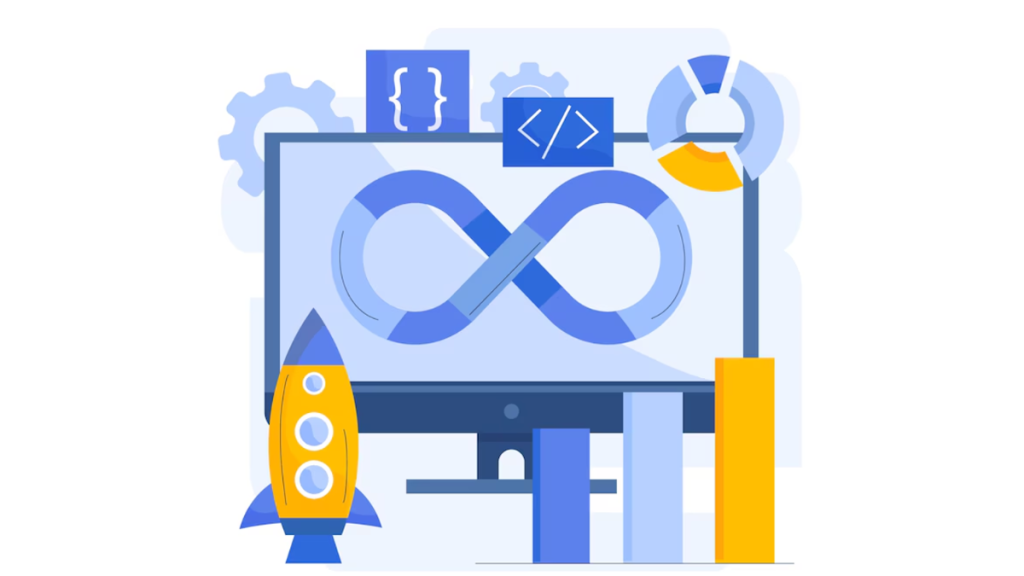DevOps is a modern approach that is designed to increase efficiency and speed up the process of releasing digital products. With its development, traditional testing methods have ceased to meet rapidly changing needs. They can no longer ensure fast delivery and high quality of software.
As a result, DevOps has led to the emergence of a new approach to testing that has made it integrated, automated, and continuous. In this article, we will discuss the basic characteristics of the new quality assurance process and provide a comprehensive list of practices that will help build a reliable and effective strategy.
Features of DevOps Testing
If earlier testing was the final stage of the development process, now everything has changed. With the advent of the DevOps culture, testing has become involved in every phase of software creation. It seeks to find and detect defects earlier to ensure that the digital product is ready for release at any time.
To follow the trends, teams can use several approaches. The first is to update the existing testing process in the company in order to meet new requirements. The second is to resort to professional DevOps testing services to remain competitive in the market and keep up with innovations.
No matter which option you choose, you should navigate the basic features of DevOps testing. They include the following:
- Continuous testing of the smallest code changes for early detection and elimination of errors.
- Process automation for rapid release of new code iterations and the product in general.
- Maintaining high software reliability even under conditions of constant scalability and updates.
- Strengthening collaboration between teams and departments, which contributes to the quick and effective correction of defects.
The main goal of testing in DevOps is to maintain high product quality throughout the entire development life cycle.

What Approaches to Consider to Develop the Best Strategy
Creating a testing strategy in a DevOps environment can be confusing. To cope with the task, you need to take into account all the features of the approach. In other words, you need to create a single strategy from the many others involved in the methodology. Here are the most important of them:
- Implementation of the Shift-Left technique. Testing shift-left involves moving the testing phase to the beginning of the development process. It is implemented at the initial stages to accompany the release of code and the subsequent creation of digital products.
- Extensive process automation. It is designed to conduct testing with minimal human participation in order to achieve fast feedback cycles and reduce the number of human errors.
- Organization of a continuous verification process. Testing is involved in every phase of development and every smallest code update, which improves and speeds up the overall process.
- Involvement of behavior-driven and test-driven development. The BDD approach involves writing tests from the perspective of the future user experience, while the TDD approach involves creating test cases before writing the code. It helps to release programs that have a minimum chance of detecting defects or errors from the beginning.
- Systematic performance and load testing. Its goal is to make sure that the system can handle the maximum number of requests under development conditions without affecting the quality of the software.
Creating a clear and consistent strategy is important for optimizing workflows and thoroughly testing the system.
Proven Practices to Follow
Having at least a minimal understanding of DevOps testing principles can help a lot. However, to achieve mastery in the area, you should take into account some additional tricks.
Increase the Scope of Automation
The more tests are automated, the faster the testing process will be. Some processes may indeed require manual intervention. However, automation is often the best solution for acceleration and improvement.
Write Tests Before Development
It is a proven method used to reduce errors and ensure a clear understanding of how the code should be written. It helps improve the user experience and reduce the cost of finding and fixing bugs.
Perform Parallel Testing
If you want to reduce the time required to evaluate the software and get quick feedback, execute test cases in parallel.
Test Software in Different Environments
It will ensure better compatibility and system performance. Use emulators and real devices. They should have different settings and operating systems to expand the testing coverage.
Monitor Results
Keep detailed documentation, analyze data, and identify patterns to predict system behavior in the future. Use the information you gain for similar projects.
Testing is the foundation of modern DevOps practices. It helps to prepare code for launch at any time, minimize error detection at the final stages, and ensure quick verification results.

